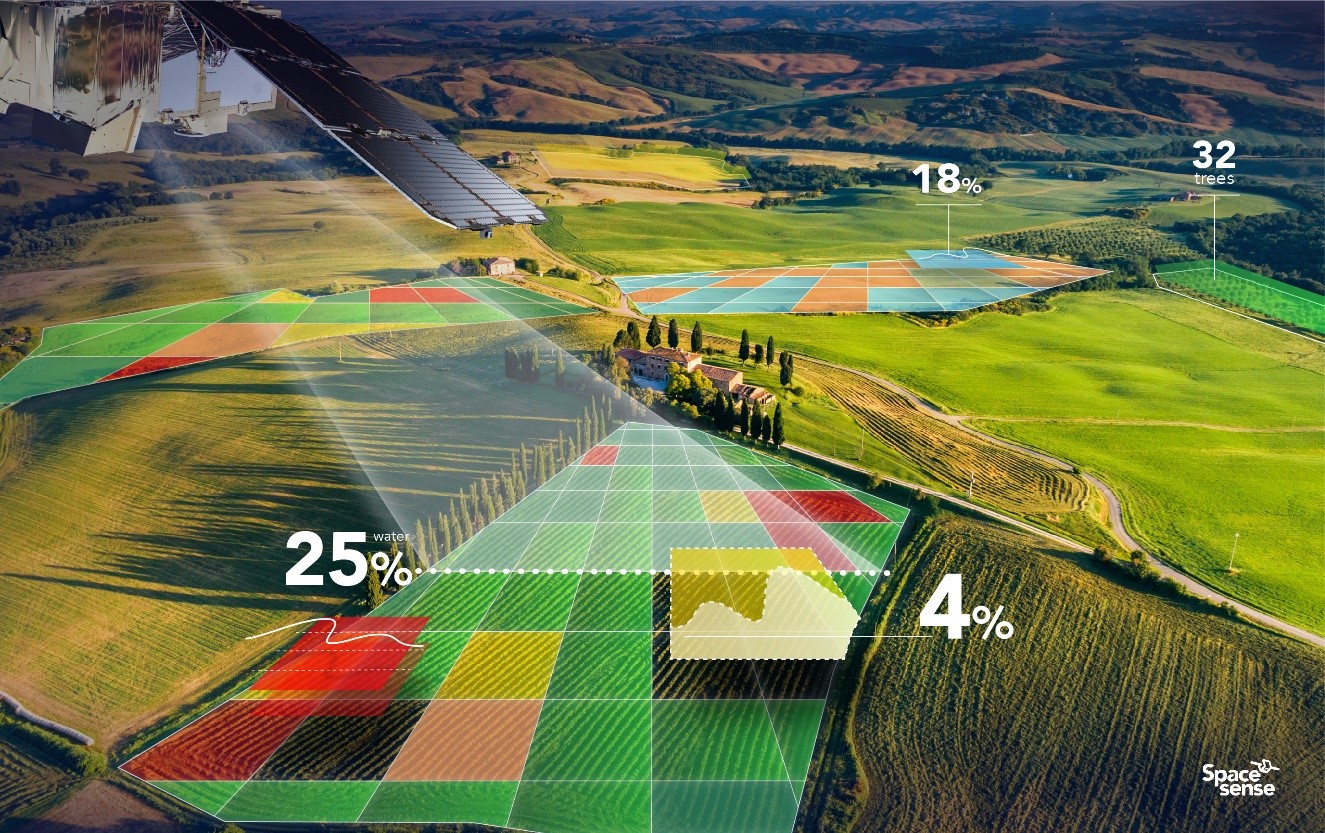Objectives of the service

Ag & soil companies, food supply chain companies and insurance companies are looking for ways to accurately estimate the Soil Organic Carbon (SOC) stock in agricultural fields to trade this in emerging carbon credit markets. Unfortunately they currently have to rely on very complex models that require a lot of ground information to work, and they need to send people in the fields to get this data. This is not scalable.
Our service will be used by these companies as input into their own models that would incorporate other data sources (ground based), to provide an accurate representation of Soil Organic Carbon (SOC) stock.
The need for the services we want to develop is rather simple: Provide the companies mentioned above a way to check on Recommended Farming Practices (RFP) at costs that are competitive. Through our service they get the information, which they can use to calculate the final SOC stored in the ground.
Like all our other detectors, they will be available via a yearly subscription, which will enable our customers to connect directly to our API to get the analysed data.
Users and their needs
We target several user types:
- Soil specialised companies which provide SOC information
- Farm management solutions looking to integrate SOC as one of their service
- Insurance companies looking to assess environmental performances of some of their clients
Their needs are as follows:
- Get enough field information to build an SOC estimation without sending people on the field
- Get a way to check the farmer’s reports
- Have the solution integratable into their internal database and environment
We mainly aim for companies in Europe and North America
Service/ system concept
The three practices detectors are made available through an API to be delivered directly into the user’s environment.
When calling the service through the API, the user has to provide the following information:
- The field boundaries (usually a geojson file)
- The start date at which the service should look
- The end date at which the service should look
The service will then download the historical satellite images for the field (from Sentinel 1 and 2), process them to extract the information, and then respond to the user’s request in the form of a json file, providing the following information for each date in the requested period:
- The average LAI value
- If the service detected a harvest
- If the service detected a sowing
- If the service detected a tilling
- If the service detected a cover crop
- The number of the current crop cycle (based on the start date)
The user now has the complete information about this specific field over the last few years, and can automatically compare this information with the one provided by the grower.
Space Added Value
As you’ve seen so far in the application, satellite imagery is the core of our products. Without it, they cannot exist. We use the entire archive of optical and radar data from Sentinel 1 & 2 extensively to train our models for each new image released in order to provide a field assessment. We leverage the highest available spatial and temporal resolutions when possible. Non-space technologies that provide field level assessments of carbon sequestration potential are single snapshots in time and require extensive time for fieldwork. Satellite technologies allow us to provide the same sort of assessments, remotely and continuously.
We access the satellite imagery either directly via the Copernicus, the DIAS, Sentinel-Hub or AWS, depending on the use case. We then store it on our servers to use it.
The alternative to satellite imagery is using drones, or sending people on the field, which is not scalable at a country level for both cases. Satellite imagery is the only solution here.
Current Status
The study was completed in January 2022.
At the end of the study the technical solution was implemented and providing satisfactory results. It is now being tested with a couple of beta customers at a larger scale, to validate if it should be expanded.



